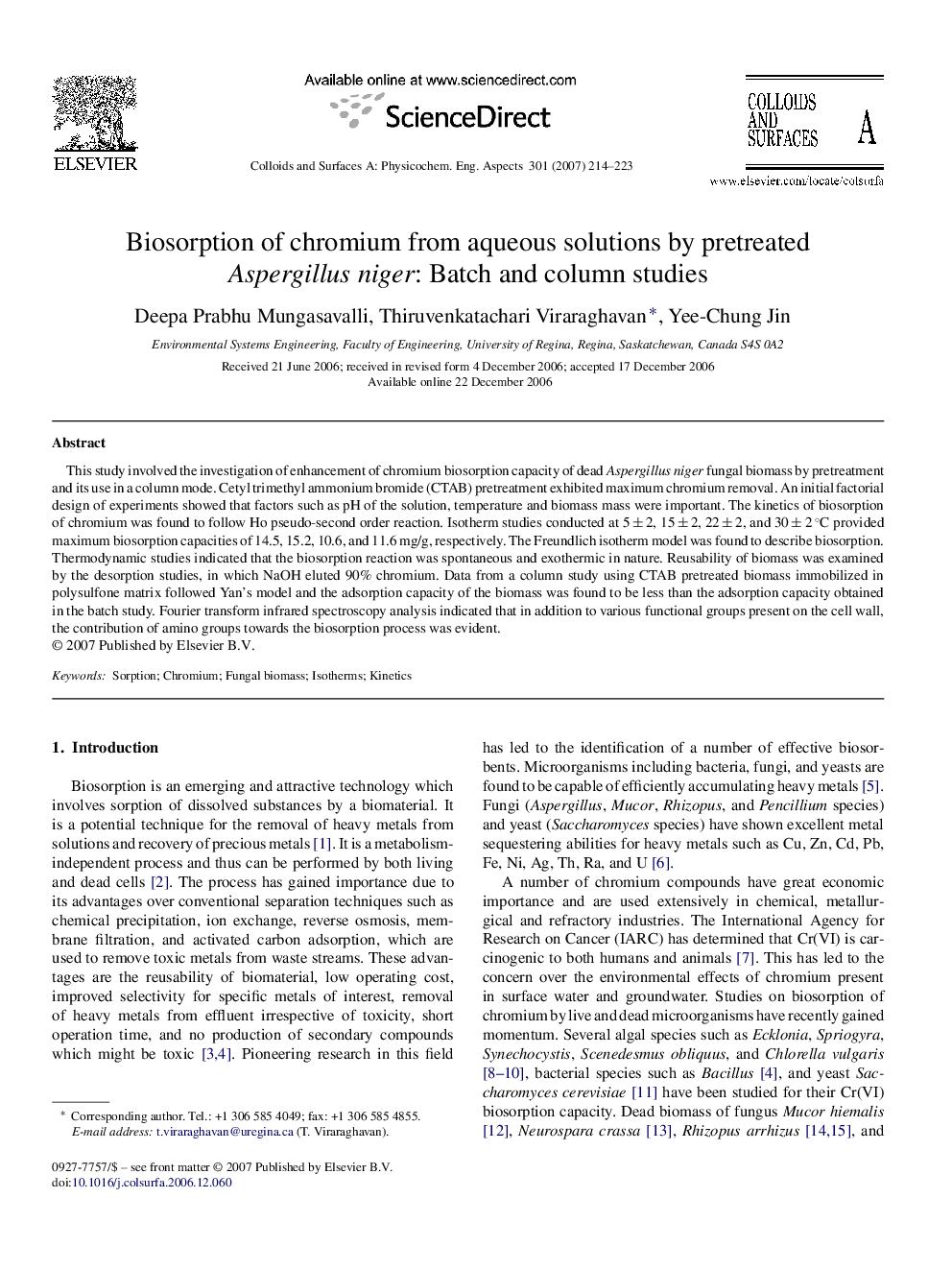| Article ID | Journal | Published Year | Pages | File Type |
|---|---|---|---|---|
| 597547 | Colloids and Surfaces A: Physicochemical and Engineering Aspects | 2007 | 10 Pages |
This study involved the investigation of enhancement of chromium biosorption capacity of dead Aspergillus niger fungal biomass by pretreatment and its use in a column mode. Cetyl trimethyl ammonium bromide (CTAB) pretreatment exhibited maximum chromium removal. An initial factorial design of experiments showed that factors such as pH of the solution, temperature and biomass mass were important. The kinetics of biosorption of chromium was found to follow Ho pseudo-second order reaction. Isotherm studies conducted at 5 ± 2, 15 ± 2, 22 ± 2, and 30 ± 2 °C provided maximum biosorption capacities of 14.5, 15.2, 10.6, and 11.6 mg/g, respectively. The Freundlich isotherm model was found to describe biosorption. Thermodynamic studies indicated that the biosorption reaction was spontaneous and exothermic in nature. Reusability of biomass was examined by the desorption studies, in which NaOH eluted 90% chromium. Data from a column study using CTAB pretreated biomass immobilized in polysulfone matrix followed Yan's model and the adsorption capacity of the biomass was found to be less than the adsorption capacity obtained in the batch study. Fourier transform infrared spectroscopy analysis indicated that in addition to various functional groups present on the cell wall, the contribution of amino groups towards the biosorption process was evident.
